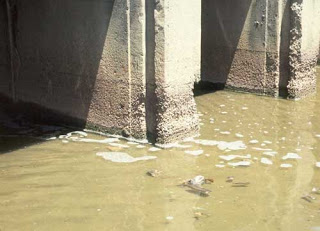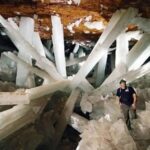Sulphate attack in Concrete, Its Effects, Causes and Prevention
Solution of the sulfates of various bases including sodium, potassium, magnesium and calcium react with hydrated cement paste forming gypsum or a compound called ettringite (sulphoaluminate) which leads to the expansion and disruption of the concrete and mortar this process is referred as sulphate attack.
Sulphate attack is a chemical break down mechanism where suphate ion attacks on components of cement paste. Sodium Sulphate attacks calcium hydroxide and forms gypsum that becomes more than doubles the volume. Sulphate attack might show itself in different forms depending upon the chemical form of the sulfate and the atmospheric environment which the concrete is exposed to.
Groundwater or soil contains soluble sulfates naturally or sometimes it comes from the industrial effluents or fertilizers which sometimes also contains amounium sulfate which attacks hydrated cement paste by producing gypsum.
Calcium sulfate attacks only calcium aluminate hydrate, forming calcium sulfoaluminate which is known as ettringite. Magnesium sulfate attacks calcium silicate hydrate as well as calcium hydroxide and calcium aluminate hydrate.
The consequences of sulfate attack include not only disruptive expansion and cracking, but also loss of strength of concrete due to the loss of cohesion in the hydrated cement paste and of adhesion between it and the aggregate particles.
Sulfates combines with the C-S-H, or concrete paste, and begins destroying the paste that holds the concrete together. As sulphate dries, new compounds are formed, often called ettringite.
These new crystals occupy empty space, and as they continue to form, they cause the paste to crack further damaging the concrete.
Physically sulfate attack, often evidenced by bloom (the presence of sodium sulphates Na2SO4 and/or Na2SO4.10H2O) at exposed concrete surfaces.
Concrete attacked by sulfates has a characteristic whitish appearance. The damage usually starts at edges and corners and is followed by progressive cracking and spalling which reduce the concrete to a firable or even soft state.
It is more rare but, originates from such concrete-making materials as hydraulic cements, fly ash, aggregate, and admixtures.
• portland cement might be over-sulphated.
• presence of natural gypsum in the aggregate.
• Admixtures also can contain small amounts of sulphates.
External sources of sulphate are more common and usually are a result of high-sulphate soils and ground waters, or can be the result of atmospheric or industrial water pollution.
• Soil may contain excessive amounts of gypsum or other sulfate.
• Ground water be transported to the concrete foundations, retaining walls, and other underground structures.
• Industrial waste waters.
1: Cement type and content:
2:Fly ash addition
3: sulphate type and concentration
4: Chloride ions
The most important mineralogical phases of cement that affect the intensity of sulphate attack are: C3A, C3S/C2S ratio and C4AF.
The addition of a pozzolanic admixture such as fly ash reduces the C3A content of cement.
The sulphate attack tends to increase with an increase in the concentration of the sulphate solution up to a certain level.
It is the physical resistance to penetrate into the concrete of all liquids, by reducing the water/binder ratio, and adequately consolidating and curing the concrete
• The quality of concrete, specifically a low permeability, is the best protection against sulphate attack.
• Adequate concrete thickness
• High cement content
• Low w/c ratio
• Proper compaction and curing
















